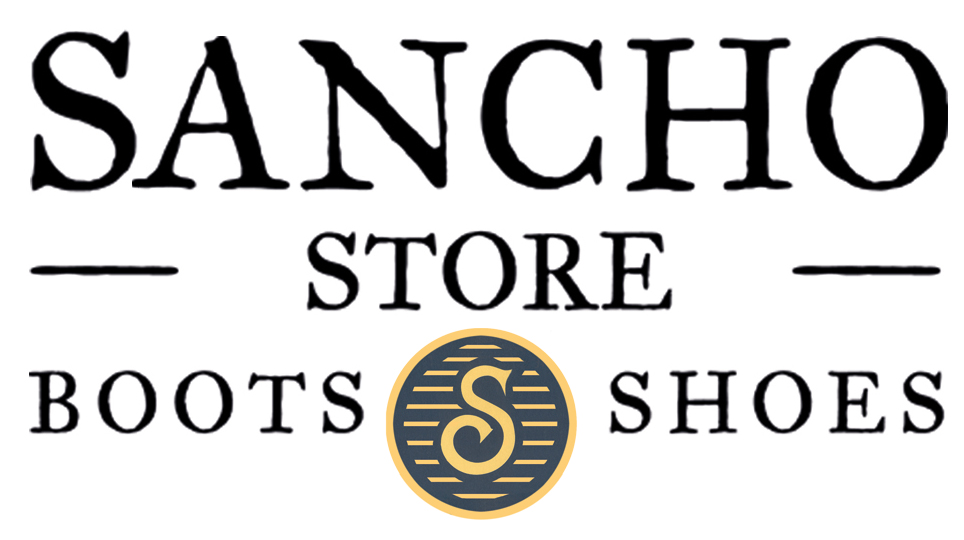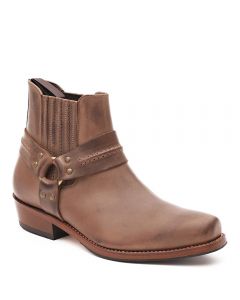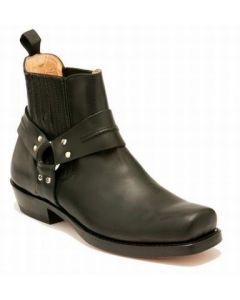- 03.01.2024
Norman Vilalta Bespoke Shoemakers bietet Herrenschuhe und -stiefel von höchster Qualität, die von einem kleinen Team von Kunsthandwerkern in Spanien hergestellt werden.
"Warum wurde ich Schuhmacher ? – Nun, das ist es, was ich zu tun habe. Es ist das, was ich tun muss, ja. Irgendwann im Leben habe ich beschlossen, das zu tun, was mich glücklich macht, aber von Natur aus glücklich."
Immer wieder trifft Sancho Store interessante und inovative Schuhmacher in aller Welt. Diese werden von uns porträtiert um dem aussterbenden, aber so wichtigen Handwerk eine Stimme mehr zu verleihen. In einer Zeit von schnelllebigen Produkten erhält die Wiederentdeckung von langhaltenden, hochwertigen und kunstvollen Schuhen ein neues Gewicht.
NormanVilalta


Atelier Norman Vilalta
Carrer de Enric Granados 5
Barcelona, Spain 08007
https://shop.normanvilalta.com/
https://www.instagram.com/normanvilalta/
https://www.facebook.com/normanvilaltaatelier/


Do you also repair shoes or do you only make new ones?
We do not repair shoes from other brands, but we do repair shoes from our own brand. This includes taking care of our handmade patinas, the hand-framed sole for our fully handmade shoes or the Goodyear welt of our off-the-rack Condal collection.
How did you become a shoemaker?
I originally pursued a secure, more traditional career as a lawyer in my home country of Argentina. Unfortunately, but fortunately, life as a lawyer was not fulfilling and I wanted to go in a different direction to give life more meaning and actually create something with my own hands.
The beauty of bespoke shoes has always interested me, but there was no clear path to becoming a shoemaker without starting from scratch and taking a big risk.
It wasn't until the age of 31 that I decided to take the plunge and moved to Florence, Italy, where the tradition of handmade shoes was still alive and where I could do an apprenticeship. In Florence, I was able to immerse myself, learn and practice how to make a shoe by hand.
After my apprenticeship, I had the option of staying in Florence or moving to the UK or France to open my own workshop, but I didn't want to be trapped in the traditional designs that are common in those countries. I wanted to do something different.
I chose Barcelona as my headquarters because although Spain has a very rich history of shoemaking, there was and still is a lot of room for growth and the city was less rigid in the past when it came to art and design (think Picasso, Dali and Gaudi).
Where did you learn your craft?
I learned the craft from Stefano Bemer, Saskia Wittmer and Stephane Jimenez in Florence (Italy), and through practice, practice and more practice. After 20 years of working in the footwear industry, I continue to improve elements of the craft and push myself to learn and adapt.
If you weren't a shoemaker, what would you be?
A full-time fly fisherman
What is your favorite part of shoemaking?
I alternate between designing and being able to talk to customers in my workshop in Barcelona. It's always refreshing to finalize a new design, but equally refreshing to hear a customer's unique story. I'm lucky to have clients from all over the world who lead interesting lives and have great stories to tell.
How many hours a day do you work in your shoe atelier?
In order to master the art of shoemaking, I worked almost 12 hours every single day in my studio in Barcelona when I started out on my own. As in any other profession, there is always something on the learning curve that you still have to learn and master.
Today, 20 years later, I work with a small team of shoemakers between 50 and 60 hours, from Monday to Saturday.
What has changed in your profession over the years?
The profession has changed in many ways with the growth of the internet and social media. Nowadays, people have access to an infinite amount of information at their fingertips.
When I started out in the early 2000s, which I refer to as the golden age of handmade shoes, there was very little information on the internet about making shoes, nor were there places where I could interact with people who shared my passion for shoemaking. Even the opportunity to see examples of beautifully designed products was limited. Nowadays, you can pull out your phone and search on Google, Youtube, Instagram or Pinterest and access a wealth of information.
Thanks to this easy access to information, I have noticed a huge interest in shoemaking across all age groups. Older generations who have a newfound appreciation for craftsmanship and good design, and younger people who are interested in a career in this niche world.
I know that as shoemakers grow, competition will increase, but I'm looking forward to it because I'm sure we'll see a whole new, innovative generation of talent that can and will create something new and exciting in this industry.
What makes a good shoemaker?
A good shoemaker is someone with a good hand, a strong visual sense, attention to detail, patience, a tremendous drive and innovative spirit to create something new.
One example of this is how Salvador Ferragamo developed shoes from a material that was considered strange in his day, during a time of war when he had limited access to leather. Another example is how Olga Berluti gave the shoes a handmade patina, a distinctive handcrafted detail that can still be found on high-quality men's shoes today.
In most countries, especially in the so-called "developed countries", working with your hands is neglected, so it takes a strong character and pride to deal with the majority of people who are afraid to get their hands dirty.
What is the biggest challenge for you in making shoes?
One of the biggest challenges in making bespoke shoes is time and distance. Making a fully handmade and customized shoe involves hundreds of steps, and although I do virtual fittings, it is always better to try on a trial shoe directly with a customer. Since most of my clients live outside of Spain, in-person fitting appointments are often scheduled months in advance. Therefore, custom shoes often take between 1 year and 1 ½ years to make.
When making our Condal collection off-the-peg, like most small brands and companies, we have much less negotiating room when working with suppliers. Therefore, it can be difficult to secure leather, compete with larger luxury brands for priority in production and control lead times.
Also, a detail of my shoes that not all customers understand is that every pair of finished shoes is finished by hand before delivery. When I designed the Condal collection, I didn't want to make an ordinary ready-to-wear line. I had worked in bespoke for 10 years and needed to be able to transfer that experience to this shoe collection. I felt and still feel that this is part of my destiny. As a result, my lasts fit most of our customers very well and the handwork is essentially the same as my bespoke shoes, taking between 3 and 6 hours per pair.
My team and I use inks, dyes, waxes, creams, many grits of sandpaper, glass, iron tools and fire to achieve a level of craftsmanship that very few ready-to-wear brands achieve or attempt to achieve. Visitors to my workshop in Barcelona can see my team working by hand.
The challenge is to bring this level of craftsmanship to new potential customers, as the vast majority of people have never owned or even seen a bespoke shoe.
What are the benefits of a bespoke shoe?
The benefits of bespoke shoes are a combination of function and aesthetics. A good bespoke shoe fits properly so that the wearer can stand and walk comfortably and parts of the shoe do not wear out as quickly as with an ill-fitting shoe. A well-fitting shoe also supports the entire body structure, which improves movement and posture.
From an aesthetic point of view, a custom-made shoe complements the style and personality of the wearer. When making custom shoes, I ask a lot of questions to better understand the wearer's taste, sense of style and overall lifestyle, and I work with them to make a shoe that suits them. The goal is to make a shoe that customers love to wear.
The result of a bespoke shoe is a truly unique and individual piece. If you compare the personalization of our bespoke shoes to most mainstream luxury products, would Louis Vuitton actually design a bespoke bag for you? Would Ferrari allow you to co-design a car (and I'm not talking about customization)?
What should you pay particular attention to when caring for handmade shoes?
When caring for handmade shoes, maintaining the uppers with appropriate shoe creams and waxes, changing the soles properly when they are badly worn and using lasts will ensure that handmade shoes last for many years or even decades.
I always love it when older gentlemen come into my workshop in Barcelona wearing a pair of shoes that were handmade for them 30 years ago. That's really amazing.
What shoes are currently in fashion for you?
Our Andres Adelaide Oxford is very popular with new customers who are looking for a more stylish pair of shoes. The Adelaide is an ideal choice because it has the classic look of an oxford with a cap toe, but with design details that aren't too flashy. The swan seam trim is a sharp and elegant detail, and the leather combination is a unique detail that most mainstream brands don't include in their shoes.
For customers looking for something more casual, my Derby Simple Shoe has been the shoe of choice since I launched my Condal collection. The first shoes included a handmade 3D patina, a patina I developed for grained leather that uses the texture of the grain to create a 3D effect, but this year I have some exciting new patinas for suede in the pipeline. Our first is a midnight blue handcrafted patina, which is perfect timing as Robb Report says blue suede is hot this fall/winter season.
Customers looking for our flagship style opt for our Decon Chelsea Boot. It's a Chelsea boot with an elongated, elegant toe and a front vamp with two eyelets for a glove-like fit. The boot is known among shoe lovers as a design masterpiece.
How often does a customer come into your store?
We normally have between 3 and 8 customers a day. Many customers who visit us have been following us for a long time and finally have the opportunity to visit Barcelona. We also have a lot of existing customers who come by to see what new shoes we have on offer or are planning.
Do you have many regular customers, and what kind of customers are they?
A large portion of our customers are repeat customers who usually start with our off-the-rack Condal collection and then work their way up to our 1202 Heritage collection, our handmade semi-custom, which is often limited to 6 pairs per design, and finally to their own special pair of custom shoes.
I usually encourage customers to try our ready-to-wear shoes first, as I have worked for many years to develop lasts that fit well for a majority of customers.
As existing customers become more experienced in the world of handcrafted footwear, they try their first hand-blasted, hand-stitched and outsole-stitched shoe from my 1202 Heritage Collection.
Finally, when the customer determines it's time to have a completely personalized experience, they move on to customization, where I work directly with them to determine their style and design a shoe specifically for them. This process takes about 1 to 1.5 years and involves two sets of trial shoes. The first to test the fit and the second to confirm the fit and design.
Do you have any celebrity clients?
I have celebrity clients and friends who are celebrities that I have met in the footwear world, but out of respect for privacy I do not disclose this information publicly. So far, I've managed to let my products do the talking instead of relying on celebrity endorsements.
What do you talk about with your customers?
The topics of our conversations with customers vary. I usually spend a lot of time explaining the advantages of Goodyear and hand-stitched shoes. As most people are used to shoes from large-scale production, I take the opportunity to show them around the workshop, where they can see how members of my team make shoes by hand and hand-finish the Condal collection.
I often have conversations about where people come from, as the vast majority of our customers come from outside Barcelona and Spain. No topic is really taboo, I even dare to bring up politics, even though I know you're not allowed to.
As some people know, I'm passionate about fishing and if a customer shares this passion, I can talk to them for a very long time.
Who repairs your own shoes?
Our team repairs our shoes ourselves, unless customers have a trusted cobbler in their area who is familiar with Goodyear and hand welted construction.
Where did you go on your last vacation and what kind of shoes did you take with you?
My last mini-vacation was a trip to New York City last October 2023 for the first Super Trunk Show hosted by Justin Fitzpatrick of Shoe Snob, Jesper Ingevaldsson of Shoegazing Blog and Kirby Allison. I love the energy and movement of the big city as it really inspires me.
As it was a trunk show, I had a lot of shoes with me, but the two I wanted to wear were my Haring Moc Toe Derby Boot and my Manolo Tassel Loafer. I took the Haring Boot because it's an elegant version of the Redwing Moc Toe and the Alden Tanker and the perfect beautiful and comfortable boot for the elegant streets of New York. And the Manolo Tassel Loafer because it's easy to slip on and can be worn all year round, with a durable, lightweight and comfortable Vibram Gumlite Commando sole.
Is there a shoe you'll never forget?
The Decon Chelsea Boot is a shoe I will never forget because it is my pride and joy. It sounds strange in the world of design, but it's actually very difficult to make something simple. My Decon Chelsea Boot has its origins in a classic Chelsea Boot, but with a very simple change to the design that is both aesthetic and functional.
As I mentioned before, the extended shaft edge and sculpted toe box give the boot an elegant look, and the two eyelet panels have the function of creating a more customized fit while being an aesthetically beautiful detail of the design.
What is your absolute favorite shoe and which shoes do you not like at all?
It's hard to say what my absolute favorite shoe is, but if I had to choose, it would probably be my Wholecut Oxford. The challenge was to make the Wholecut more sophisticated without losing the simplicity of the design.
I achieved this by moving the lacing so that it runs diagonally across the outside of the vamp, by incorporating embellishments into the cut of the lacing and by using an asymmetrical pattern, which is like a new watch complication in the world of watches, but within the design and structure of a shoe.
For those who are not yet familiar with my designs: The asymmetrical pattern is a cutting technique I introduced to eliminate the need for the center back seam. The result is a design that is more streamlined and aesthetically pleasing.
There is no shoe per se that I don't like, but it's more the attitude of certain brands and their approach to the design and production of shoes. There are brands that craft their shoes perfectly, but not many that actually contribute to the design.
What are your plans for the future?
Our plans for the future are to continue to create beautiful, wearable shoes. We want to expand our Condal ready-to-wear collection to give customers access to more of my designs and continue to challenge ourselves with new design techniques in my semi-custom 1202 Heritage Collection, which is often limited to 6 pairs after each launch.
What footwear moment will you never forget?
The moment I will never forget is when my late master Stefano Bemer said that to become a great shoemaker you have to leave the walls of the city.
The lesson was essentially that to be successful in life, you have to break away from everyday traditions and embrace something new after learning the rules. In the world of classic shoes, most shoemakers and brands make mostly the same thing. To really make an impact, you have to challenge yourself, get uncomfortable and create new and beautiful products.


















